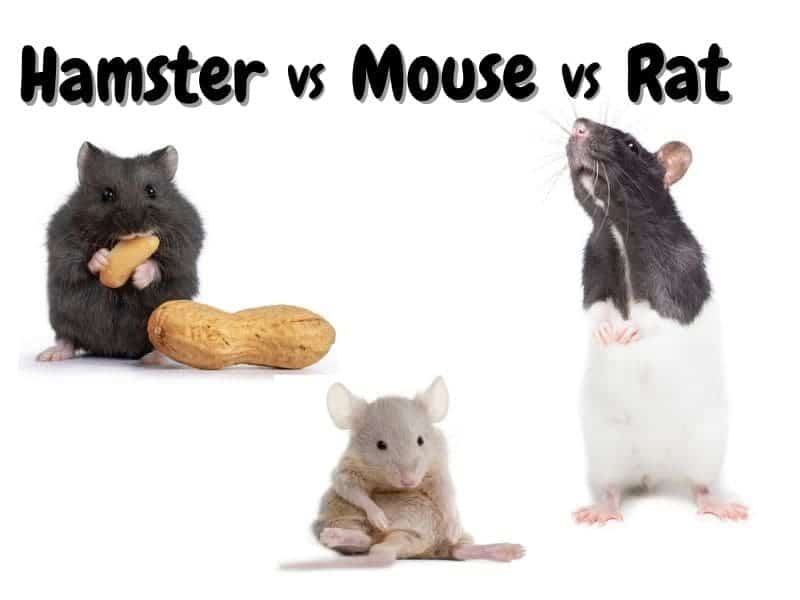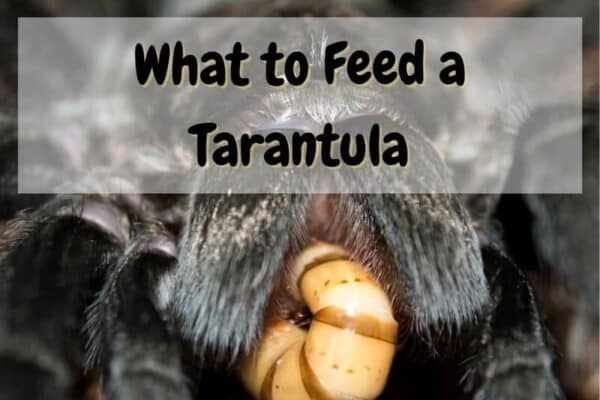Hamsters, mice, and rats have become popular pocket pets for the past few decades. Partly because they have been featured in many cartoons such as Ratatouille or Rhino, but also because they are super cute pets.
In this article, we are going to compare these three pets that may seem similar but actually have some pretty distinctive differences, from their physical differences and diet to their temperament and sleep patterns. By the time you are done reading the article, you will be able to make an educated decision about which of the three animals will make the best pet for you.
Hamster VS Mouse VS Rat: 9 Main Differences
| Hamster | Mouse | Rat | |
|---|---|---|---|
| Size | 6-8 inches (Syrian) / 2-4 inches (Dwarf) | 5-7 inches (nose to tail) | 12-20 inches (nose to tail) |
| Personality/Temperament | Shy & Solitary | Shy & Social | Intelligent & Social |
| Lifespan | 2 – 4 years | 1 – 2 years | 2 – 3 years |
| Price | $10-20 USD | $5-10 USD | $10-20 USD |
| Activity | Nocturnal | Nocturnal | Diurnal |
| Trainability | Medium | Medium | Easy |
| Minimum Cage Size | 450 sq. in. | 216 sq. in | 288 sq. in |
| Diet | Omnivorous | Omnivorous | Omnivorous |
| Health Issues | Frequent | Less Frequent | Frequent |
1. Physical Differences
Of the three animals, hamsters are the most physically different. They typically have fairly short tails, though a Chinese hamster does have a long tail reminiscent of other rodents such as mice and rats. Hamsters have short faces, blunt noses, and small round ears. They also have very distinctive cheek pouches that they can use to carry around food. This is why their food will often disappear shortly after you put it in the food bowl. Finally, depending on the type of hamster, they have a range of different coat colors.
Mice can vary in size, so they are comparable to a dwarf hamster’s size but much smaller than larger breeds like Syrian hamsters. As far as coloring, mice tend to be white, brown, grab, or black. They have slender bodies, and their ears are usually significantly larger than a hamster’s. Mice also have fairly long tails, which can help them stand out when compared to most hamster breeds.
Rats and mice are more commonly confused, but the easiest way to tell the difference between the two is their size. While mice tend to only grow to be a few inches long, rats are usually somewhere between 6 to 12 inches long, but up to 20 inches from nose to tail. Rats have unique tails that are relatively thick and hairless. Rats, like mice and hamsters, have round ears.
2. Personality and Temperament

Hamsters are very active and curious creatures. They like to run around and play, which is why it is important to provide them with plenty of exercise toys such as climbing structures and wheels.
Hamsters are also not very social creatures. In fact, they can often become territorial and aggressive when kept together. For this reason, Syrian hamsters must be kept on their own. However, this does not mean that they do not get along with humans. As long as they are socialized from a young age, hamsters can be trained to be handled and held. With time they can even form bonds with their owners.
Read: Which breeds of hamsters can live together?
Mice, on the other hand, are more social with each other. In fact, they really like to live in groups, though sometimes males kept together can start to fight. However, mice tend to be more shy and skittish around humans. While it is possible to handle them, they are often happier when left to their own devices. They are also very quick, so when you take them out of their enclosure, they can get away from you quickly.
Rats are extremely intelligent creatures. In fact, they are often compared to dogs when it comes to their intelligence. They can also be very affectionate creatures and really thrive off of handling and attention. They also need to live in pairs or small groups, or they can get lonely or depressed. They also tend to get bored if not given enough stimulation. If you do not have plenty of time to devote to your new pet or are not home a lot, you likely do not want to get a rat.
3. Lifespan
When considering the lifespan of a hamster, you have to consider the breed of hamster you are going to get. Some breeds only live to be about two years old, such as the Chinese hamster, Campbell hamster, and Russian dwarf hamster. On the other hand, the Roborovski hamster tends to live for close to four years, and Syrian hamsters are right in the middle at three years. However, all of these are just averages, and sometimes a hamster will live for significantly less or more time based on both genetics and care factors.
See also: 13 Tips to Make Your Hamster Live Longer
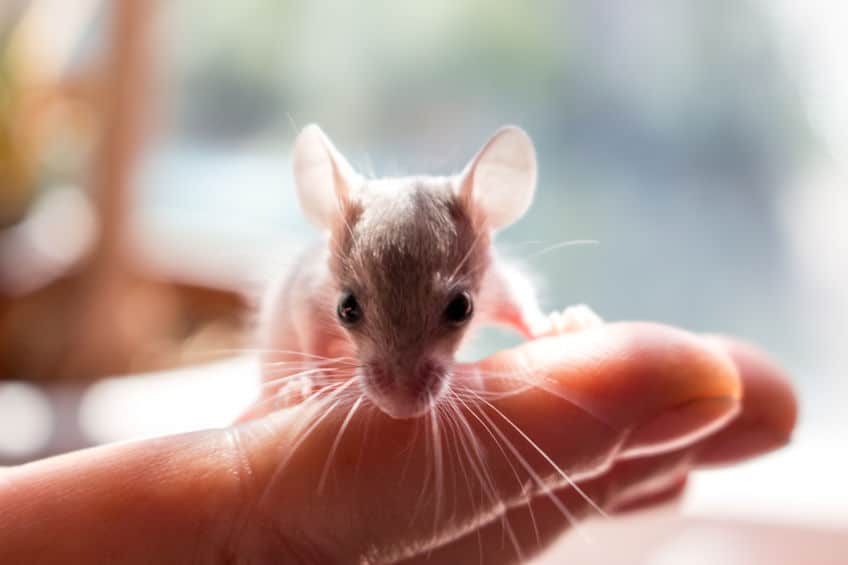
Mice typically have a shorter lifespan than hamsters do. The average mouse generally lives to be somewhere between 12 and 18 months old, though some mice do reach two years. However, some mice do live significantly longer. There are many factors that can affect a mouse’s lifespan. Some of these factors you cannot control, such as genetic health problems, while others you can, such as your mouse’s diet.
Rats tend to live somewhere between two and three years. However, just like hamsters and mice, this can vary a lot based on a range of factors. Some rats have lived to be five years old. This is likely due to both good genetics and excellent quality of care. Taking your rat to the vet at the first sign of sickness can also help you extend your rat’s life.
4. Price
Whether you are buying your hamster at a pet store or from a breeder, it will usually cost you somewhere between 10 and 20 dollars, though there are breeders that sell certain hamsters for significantly higher prices (up to $100 USD) Because hamsters are happy living on their own, you do not have to buy multiple hamsters if you do not want to, so that can save you some money.
Read: How much will a hamster cost you? A complete breakdown
Mice are very affordable pets. Typically you can expect to pay somewhere between 5 and 10 dollars per mouse. However, because mice are happiest in groups, you should expect to buy multiple. Even so, at many pet stores, you can get two mice for the price of one hamster.
Rats are comparable in price to a hamster. For a single rat, you can expect to pay between 10 and 20 dollars, but you need to buy at least two, or your rat may become lonely, bored, or depressed. Some pet stores have a discount when you buy two. So when buying rats for the first time, you can expect to spend between 20 and 40 dollars.
Read: How much will a rat cost you? What you should know
5. Sleep Pattern
Hamsters are nocturnal animals. That means that they will be most active through the night. Because they are high-energy animals, they can be very active. This means that if you keep them in your room, the amount of noise they make through the night can keep you up. It also means that if you are wanting to interact with your hamster, you are going to need to do so in the morning or evening, as it’s better not to wake up your hamster.
Like hamsters, mice are nocturnal animals that tend to sleep through the day. That means that you will deal with some of the same noise problems if you keep your mice in your bedroom. However, if you work through the day, it can be good because you will get to see your mouse when it is active.
Rats, in contrast to hamsters and mice, are not strictly nocturnal and are most active throughout the day. This means you do not have to worry about a ton of noise when you are trying to sleep because they keep the same sleep schedule as most humans. However, if you are at work all day, it can be a problem because rats thrive off of attention.
6. Trainability
Hamsters are trainable, so you want to start by training your hamster to be handled as soon as you bring him home. Give your hamster time to get used to you and then time to get used to being held. After your hamster is used to being handled and has formed a bond with you, you can start trying to teach your hamster a few tricks, such as responding to their name, but it does take patience.
It is also possible to train mice, especially when you start training your mice at a young age. However, because they are so skittish, you really need to move slowly if you want to train them. Give your mouse plenty of time to get used to your presence before you try to handle them. Additionally, do not just reach in and grab your mouse. Instead, try to use treats to entice your hamster into your hand.
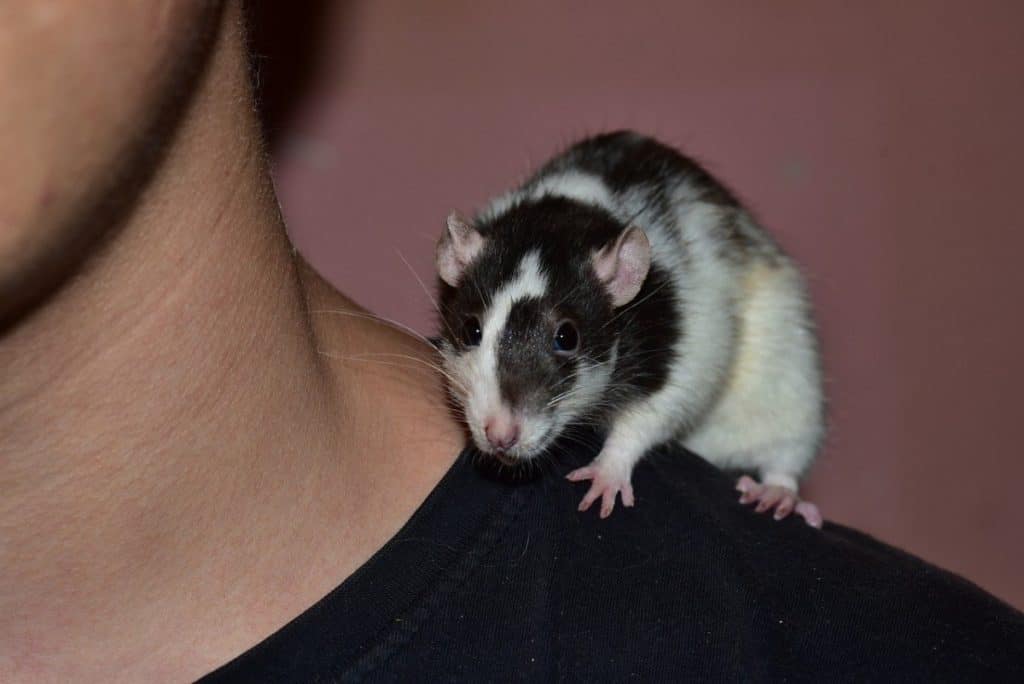
Rats are the easiest to train because they are the most intelligent. They can form really strong attachments to their owners and can learn a wide range of different tricks. They can learn commands and are great at figuring out problem-solving tasks. Simple puzzles can be a great thing to do with your rat when taking him out to play.
7. Habitat
Hamsters love to explore, chew and dig, so this means a couple of different things for their habitat. First of all, you need to make sure that you get something durable that will keep your hamster safely inside. A cage made out of glass or metal is usually the best, though sometimes you can keep a dwarf hamster in a plastic cage. If you decide to get a hamster cage with metal bars, you want to make sure that the bottom is smooth so that your hamster does not hurt his feet.
You also need to make sure you get a big enough cage, at least 450 square inches for one dwarf hamster and 620 square inches for a Syrian hamster. You also want to make sure to give your hamster constant access to food and water, an exercise wheel, and some chewing and climbing toys.
Read: How to set up a hamster cage properly
Mice are extremely active, and you need to get multiple, so you will need to get a larger cage. The minimum cage size requirement for one mouse is 1.5 square feet (216 square centimeters) and you need to add 0.5 square feet per extra mouse.
It is also extremely beneficial if you can get a cage with multiple levels so your mouse has more space to explore and play. Mice also do better when they have more toys for both physical and mental stimulation. Like hamsters, they also often enjoy playing on a wheel. Finally, for safety, you do not want the cage bars to be farther than a 1/4 inch apart, or else your mouse could squeeze through, escape, and get hurt.
Because rats are the largest of the three animals and they need to be kept in multiples, they need the biggest cages. The minimum cage size for one rat is 2 square feet (288 square inches) and one extra square foot per additional rat.
If you want to get a cage with multiple levels and plenty of space, the bigger, the better. You also want to put in lots of toys for both physical and mental stimulation to prevent your rats from getting bored. However, even if you have a great setup for your rats, you need to get them out of the cage every day.
See also: How to create a good cage setup for your rat
8. Diet
Hamsters are omnivores which means they eat both plants and animal protein in the wild, so you need to make sure you give your hamster enough protein. You can feed your hamster with commercial pellet food, or you can give your hamster some food that you make yourself. Dwarf hamsters need to eat about a teaspoon of food a day, and Syrian hamsters need about two teaspoons of food a day.
Mice can be a little simpler than hamsters to feed. In the wild, they are considered opportunistic eaters and omnivores. That means they pretty much eat whatever they stumble upon, whether that is seeds, nuts, other plant matter, or insects. Just like hamsters, you can make food for your mouse or buy commercial pellet food.
Just like mice and hamsters, rats are omnivores, so they need a combination of fruits, vegetables, and meat. Just like with the other two, you can buy commercial food or make your own. If you do decide to use commercial food, it would be best to add some fresh fruits and vegetables to the mix for your rats. Rats need about 60 calories of food a day, which is usually between 15 and 20 grams of pellet food.
9. Health Issues
Hamsters are susceptible to a fairly wide variety of different health issues, including skin diseases, teeth issues, digestive problems, and respiratory infections. Some of these conditions are genetic, while others can be caused or worsened by their environment. The good news is most of them are treatable, especially when caught early. So if you notice signs that your hamster might be getting sick, it is important that you take him to the vet right away.
Mice are generally pretty easy to take care of and do not have a lot of common health issues. However, they are known to develop tumors, so you should keep a close eye out for any odd lumps or bumps. You should also watch out for other symptoms such as vomiting or diarrhea that could be signs of internal tumors.
There are a couple of different health issues to be on the lookout for with rats. Rats almost always deal with runny noses and runny eyes, though these symptoms are not usually dangerous. However, they can also deal with breathing problems that can be dangerous, and you should take your rat to the vet if you notice he is struggling to catch his breath. Keeping a clean enclosure can help your rat stay healthy.
Hamster VS Mouse VS Rat: Frequently Asked Questions
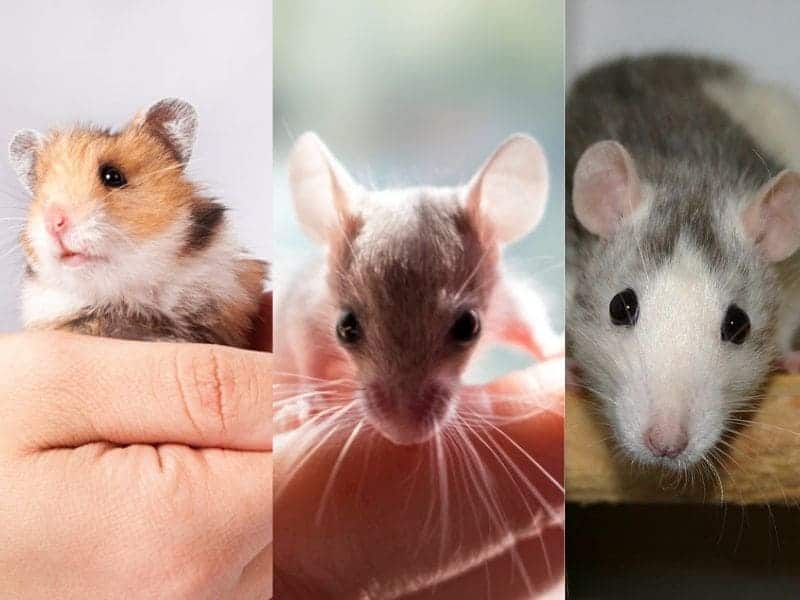
Which one of the three is best for a child?
All three animals (mice, rats, and hamsters) can make good pets for children, but they do require pretty consistent adult supervision. A couple of things to consider are that hamsters can get nippy if they feel stressed or scared, and mice can be hard to hold. If a child is holding a mouse, there is a chance the mouse could wiggle out of its hand and fall to the floor, getting hurt. Rats have a good temperament and are fairly easy to handle, but they take a lot more time than the other two.
Does one bite more than the other?
Hamsters tend to be the most likely to bite of the three. Not because they are aggressive with humans, but because they are fairly easy to startle. If you do startle your hamster, it is possible that he will go onto the defense and bite you. Because of this, you do not want to wake up a sleeping hamster. Mice can also be skittish, but as long as you take your time with them, you should not have to worry about them biting you.
Can you mix and match some of these pets in the same cage?
You should never keep these different pets in. the same cage. First of all, hamsters can be extremely territorial and aggressive; therefore, they may start fights with either mice or rats. Additionally, if you try to keep mice and rats together, the rats may view the mice as competition and kill them. While both like living in groups, they only like living in groups of the same species.
Related articles
- Hamster VS Guinea Pig – Which one makes the best pet?
- Hamster VS Gerbil – Is one better than the other?
- Syrian Hamster VS Dwarf Hamster – What you should know

